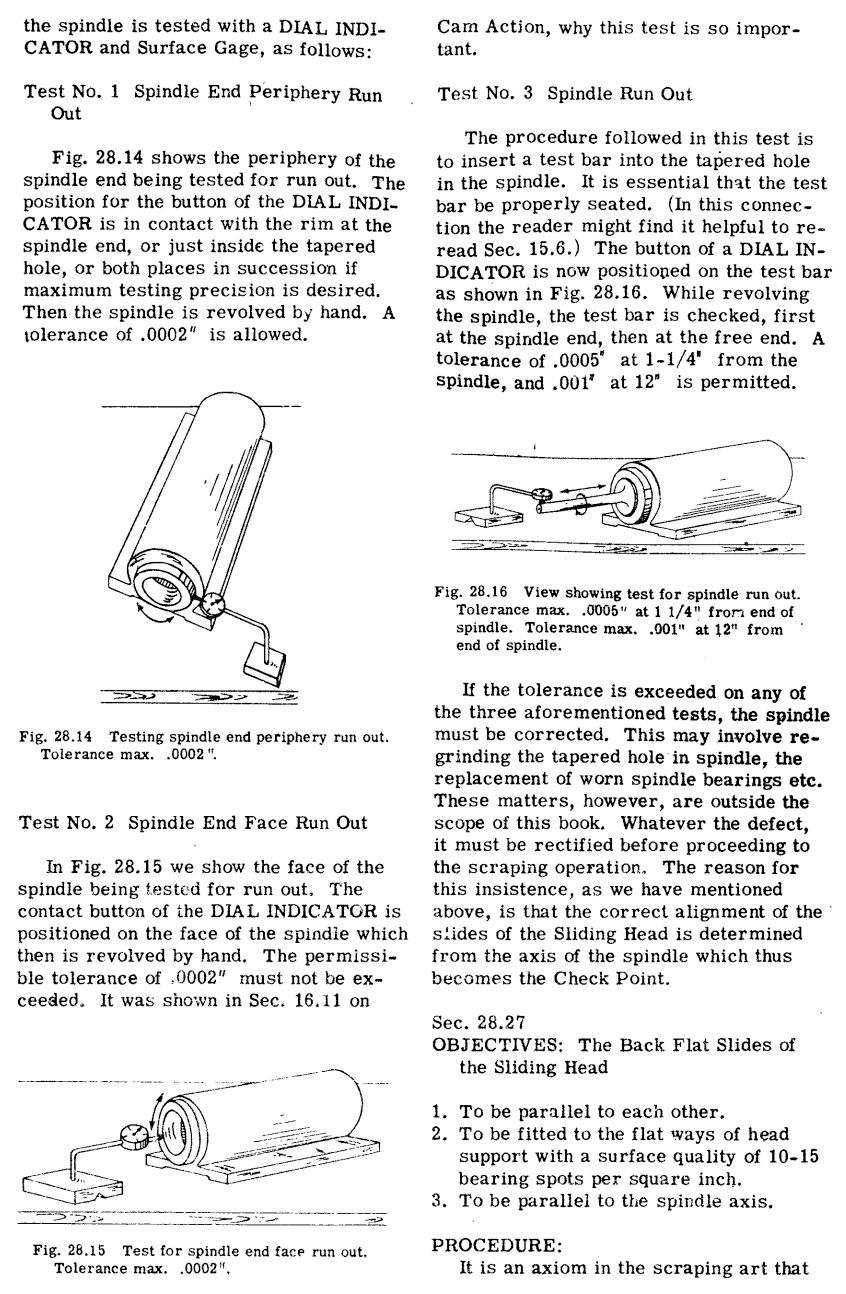- Joined
- Nov 27, 2022
- Messages
- 49
Purchased a new 728 towards the end of last year and have been having a few problems with it. First was with the fine downfeed binding up, but new parts from PM solved that, and it's smooth as butter now. Next problem was repeatable runout in the spindle wrecking havoc with any tooling more than an inch or so down from the spindle nose. I thought maybe it was my collets, but I invested in some Lyndex and Hardinge collets, and the problems remained.
I eventually realized the only way I was going to be sure what the problem was (or even if there was a problem) was by getting a precision-ground R8 test bar. They are PRICEY, so make sure you're sitting down if you look at getting one, but I picked one up from Glacern, and was disappointed to see the following measured as TIR on my 728:
5 tenths @ 1" down from spindle nose
2.65 thou @ 5" down from spindle nose
4.6 thou @ 8.75" down from the spindle nose
I removed the belt and turned the spindle by hand when taking those measurements.
PM didn't skip a beat and sent a new spindle out right away (their tech support has been very responsive and helpful). The new spindle, however, seems to measure worse then the old spindle, and I'm checking them on v-blocks outside the quill to keep the bearings out of the equation, though, they could, of course, be adding to the problem.
You can see the measurements here:
Curious if anyone else has had runout issues and if so what the resolution was? I passed along my findings to PM's tech support and I'm sure I'll hear back soon.
Since PM doesn't publish a spec, also curious to hear what you guys think *is* acceptable for runout on the 728? It's marketed as best-of-the-best "ultra-precision", so I would certainly think it's better than over 2.5 thou at 5" down from nose.
I eventually realized the only way I was going to be sure what the problem was (or even if there was a problem) was by getting a precision-ground R8 test bar. They are PRICEY, so make sure you're sitting down if you look at getting one, but I picked one up from Glacern, and was disappointed to see the following measured as TIR on my 728:
5 tenths @ 1" down from spindle nose
2.65 thou @ 5" down from spindle nose
4.6 thou @ 8.75" down from the spindle nose
I removed the belt and turned the spindle by hand when taking those measurements.
PM didn't skip a beat and sent a new spindle out right away (their tech support has been very responsive and helpful). The new spindle, however, seems to measure worse then the old spindle, and I'm checking them on v-blocks outside the quill to keep the bearings out of the equation, though, they could, of course, be adding to the problem.
You can see the measurements here:
Curious if anyone else has had runout issues and if so what the resolution was? I passed along my findings to PM's tech support and I'm sure I'll hear back soon.
Since PM doesn't publish a spec, also curious to hear what you guys think *is* acceptable for runout on the 728? It's marketed as best-of-the-best "ultra-precision", so I would certainly think it's better than over 2.5 thou at 5" down from nose.


